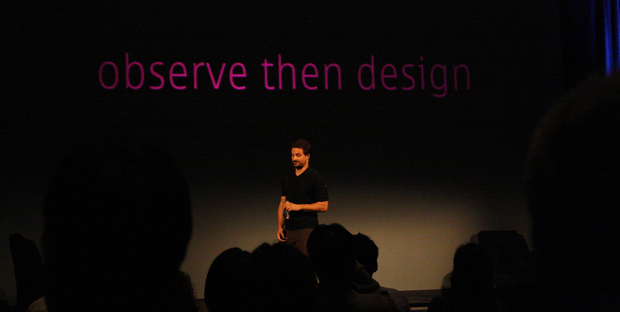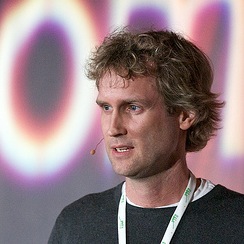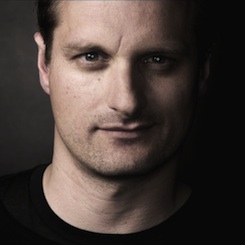Ma Sound Design For Video Games

On Monday, Frog Design, one of the country's biggest and most respected design firms, announced it had hired Jan Chipchase, one of the world's leading usability researchers and, for many years, one of the highest profile member of Nokia's design team.
It's a big move for Frog and Chipchase both. For Nokia, Chipchase has roamed the developing world, trying to figure out what sorts of cell phones the developing world needs. At Frog, he'll work from Shanghai, trying to understand the needs and wants of consumers in China, Frog's most hopeful frontier. The company opened an office there just three years ago, but Chinese clients already comprise 20% of its total business.
FastCompany.com spoke with Chipchase and Mark Rolston, Frog's Chief Creative Officer, about the challenges of designing for China, a country whose people haven't ever had much buying power before but who grow much richer with each passing year.

What's going on that
made Frog decide to invest in China and hire Jan?
Mark Rolston: We've
been spending an incredible amount of time in Asia, and it's going to be our
fourth year in China. The first two years, it felt like we were just camping out.
But the last two year, it's exploded. We can tell that if we put in the right amount
of energy, our Chinese business can be as big as the U.S.
Obviously, that's where all the new activity is in design.
But there's also something bigger going on. We're a known entity in the U.S.
market. But in China, for a firm like Frog, everything is up for grabs,
including the role you play. Some think of you as less than what you want to
be, but some let you define it. We find ourselves open to all sorts of worlds
in a manner not possible in more formal markets.
And Jan knows how to go into raw markets with emerging
behaviors, and get to the truth of the matter.
In the past, China
hasn't really respected design a whole lot. They're known for copying and
manufacturing. So does that mean you're trying to change the culture of those
you're doing business with?
MR: Universally there's not a widespread respect of what we can
do to help a company. But conversely, it's not that they've tried design and
decided it's not important. They just have no experience with it, and if they
have been exposed to it, it's just as a manufacturing process.
They're starting to step out, and explore the idea of design
as a process that starts with the raw possibilities of what customers want.
People like our client Huawei are starting to say, Let's come up with our own
answers. I would not feel stupid staying they're going to be the next Samsung.
As far as culture goes, if you do it right you can establish
a tight relationship with a client. But with every new one, you've got to do
all the same explaining very single time. And you have to convince them of
design's importance even though they've never experienced it.
So what are the big
headaches of doing design work there?
MR: Everybody talks about how fast China works. There's a
massive amount of impatience there. On the one hand you can be frustrated but
on the other you have to be really impressed. For example, once, when we came
up with our first renderings of the product, the engineering team went ahead
and made testing samples based on the dimensions we laid out. Eventually, we
came back with the right design and next time it will easier, but they were
impatient with how methodical we were and we were frustrated that they took the
first iteration and ran with it. There's no way to deal with that besides
spending time with people.
So how could someone
like Jan help you? From the outside, what he does might seem like watching
paint dry.
MR: We've realized that to get people to take the time to do
things right, you have to bring them intimate truths about their customers'
lives. Which is what Jan does. He goes places I wouldn't be willing to go, and
he lives with them to get the truth, I think he'll be able to get clients to
listen and drive them to aspects of what customers want.
So why is it so hard
to design for China?
MR: There's a lot of truisms about user interface that you can
present in shorthand to American or European businesses. But with emerging
brands, they need a deeper set of truths. Even people like Samsung that bought
into the market don't know China that well. It's simply too large and diverse.
No one's ever sold into it, and selling products to the Chinese is a new idea.
Some of the insights we'll develop will be the first of
their kind. We've done research for Samsung and Huawei to learn about the
qualities of Chinese life. What color and form do they respect? What's the
Chinese flavor? Do they like sharp objects or playful things? Serious things?
We have truisms about Japan and Europe and America. But not in China.
Then how do you make
that kind of visceral appeal to Chinese businesses making the decisions?
MR: You have to show the most significant delta from the generic
approach that you'd see selling at Costco. That's where Jan comes in. To create
that, you have to go and find out core truths: This is a guy I met and this is
what he does everyday. Too much research is too general. You have to put
yourself in people's seats.
They key idea is that it's not just emerging market. People
always say that, and our eyes glaze over. This is a bunch of people that don't
have a habit of buying things, because they've never been able to. Now they're
staring at these companies saying, "What do you have to sell?" And the companies
are saying, "I dunno. What do you want?"
Jan gives this example that I find beautiful. He spent some
time in Afghanistan for Nokia, and one thing his team discovered was that
Afghans don't trust getting onto a bus with any money. It's just not safe. But
the Afghans developed this system where you buy a calling card credit at a
stand, then forward that code to the next stand. The person there then
translates that credit's cash value, and gives it back minus a commission.
That's mobile money. Huge companies have worked on trying to
solve that problem. But these two guys in Afghanistan figured it out. Those kinds of
discoveries will drive into truly distinctive designs for the Chinese.
Can you give an
example of how the Chinese consumer differs from the American?
MR: As far as consumers go, and the culture of design, think
about Mad Men. It gives you a taste of the 1960s and what consumer culture was
like when it was just exploding. What's interesting is that you see this emerge
in the story. The ad guys aren't only coming up with the campaign, but also
having to explain the value of their product in people's lives. You see the
same thing happening in China.
For example, our previous research uncovered this huge
demand for customization that doesn't exist elsewhere. Here, Apple has dominated
by stripping away customization. But you would not believe the amount of bling
the Chinese demand in their devices. These little insights represent thousands
of pinpricks that add up to the life or death of products.

Jan, maybe it's
obvious, but can you explain why you decided to go to China?
Jan Chipchase: I
had a lot of choices about where to go, and I chose Frog because of the
commitment to social design. But if you want to be efficient in an organization
you have to very careful about where you fit within it. Obviously, it wouldn't
be very smart to go to Antarctica. In China, I'm hoping to amplify what Frog
already does. I'm not trying to give it a wholly new direction. And also, my
role is only based in Shanghai. I haven't announced the details but I'll be
heading back to Afghanistan soon.
Can you give
highlights of your work that you find particularly satisfying?
JC: I can give two, one that ended up in a product and one that
inspired other people. In Uganda, for Nokia, we did a study that showed that
people have a completely different approach to sharing products. A cell phone,
for example, might be shared between a family or a business. But a cell phone is
also designed for a personal experience. So in the phones that Nokia eventually
introduced, you have multiple address books that can be only accessed by
different users. That appears now in hundreds of millions of phones.
As far as inspiring other people, I take the people I visit
very seriously and I have an enormous respect for that privilege of seeing
their lives. We once did research into illiteracy. There are 800 million people
that are illiterate in the world, who can't read or write a sentence about
their own life. The cell phone wasn't designed for them, and technically, they
shouldn't be able to use them. So I started talking to colleagues about
studying how people communicate without written language, and designing a
cell phone for them. By communicating all the remarkable things these people
with limited resources, including the resource of literacy, could accomplish,
we set the tone for how we began to think about the problem.
But working in other
cultures, it seems like it would be easy to misunderstand what's going on, or
to completely miss it. How do you ensure that you don't miss all of these
details that might become important only later on?
JC: When you travel, it's easier to spot things for the same reason that, in your own
culture, it takes a child to point out the most surprising things. They
haven't been conditioned to forget, like we have been. Also, we always work with locals, and I have a style of
working that fosters a sense of ease.
So how do you foster
that in just two weeks in people you might see once in your life?
JC: We all stay in the same place, for one. I've had situations
where I've slept on the floor behind a couch. But if you're all seated around
the same table, eating from the same bowl, you can cut through the crap. You
can get insights into really human stuff that's overlooked in design, where the
object of the game seems to be about projecting status.
Once you've set that tone, you've got to plan to death but
be prepared to throw everything out of the window. And you have to always
question the usefulness of what you're doing.
When you were first
learning to work this way, how did you learn? Who's your mentor?
JC: No one's actually asked me that. But at Nokia, it was a lady
named Elise Levanto. I've never spoken to her about it, and this will be a surprise to her. Elise was more
senior than me when I left, but the way she has done research inspired me.
Anyone can travel but its about asking smart questions and always being
critical about what you can achieve with what you're able to gather. Her
intellectual honesty really awakened the same in me.
Ma Sound Design For Video Games
Source: https://www.fastcompany.com/1608588/conversation-jan-chipchase-and-frog-designs-chief-creative-mark-rolston
Posted by: weekslontoll.blogspot.com

0 Response to "Ma Sound Design For Video Games"
Post a Comment